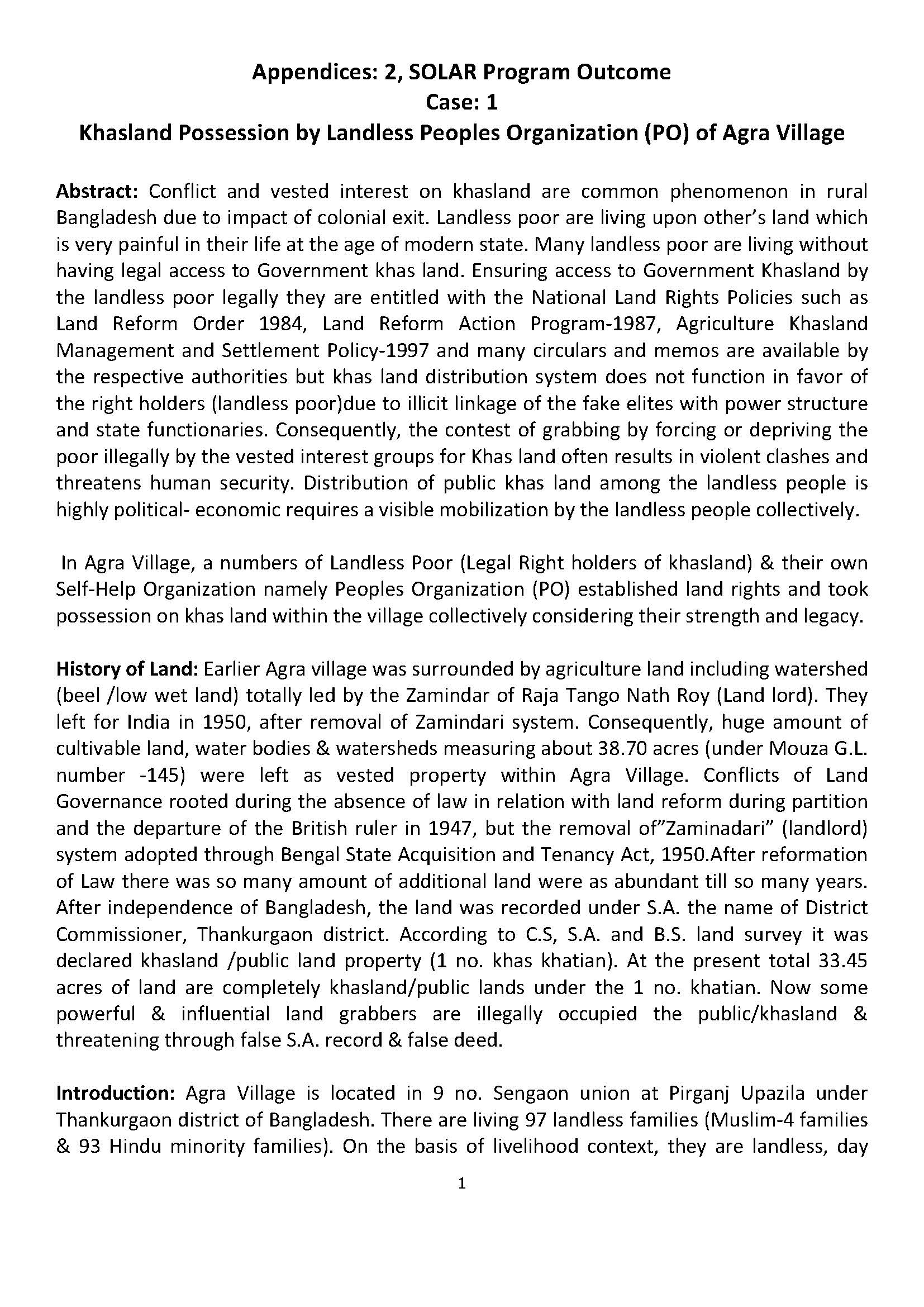Resource information
Abstract: Conflict and vested interest on khasland are common phenomenon in rural Bangladesh due to impact of colonial exit. Landless poor are living upon other’s land which is very painful in their life at the age of modern state. Many landless poor are living without having legal access to Government khas land. Ensuring access to Government Khasland by the landless poor legally they are entitled with the National Land Rights Policies such as Land Reform Order 1984, Land Reform Action Program-1987, Agriculture Khasland Management and Settlement Policy-1997 and many circulars and memos are available by the respective authorities but khas land distribution system does not function in favor of the right holders (landless poor)due to illicit linkage of the fake elites with power structure and state functionaries. Consequently, the contest of grabbing by forcing or depriving the poor illegally by the vested interest groups for Khas land often results in violent clashes and threatens human security. Distribution of public khas land among the landless people is highly political- economic requires a visible mobilization by the landless people collectively.
In Agra Village, a numbers of Landless Poor (Legal Right holders of khasland) & their own Self-Help Organization namely Peoples Organization (PO) established land rights and took possession on khas land within the village collectively considering their strength and legacy.
History of Land: Earlier Agra village was surrounded by agriculture land including watershed (beel /low wet land) totally led by the Zamindar of Raja Tango Nath Roy (Land lord). They left for India in 1950, after removal of Zamindari system. Consequently, huge amount of cultivable land, water bodies & watersheds measuring about 38.70 acres (under Mouza G.L. number -145) were left as vested property within Agra Village. Conflicts of Land Governance rooted during the absence of law in relation with land reform during partition and the departure of the British ruler in 1947, but the removal of”Zaminadari” (landlord) system adopted through Bengal State Acquisition and Tenancy Act, 1950.After reformation of Law there was so many amount of additional land were as abundant till so many years. After independence of Bangladesh, the land was recorded under S.A. the name of District Commissioner, Thankurgaon district. According to C.S, S.A. and B.S. land survey it was declared khasland /public land property (1 no. khas khatian). At the present total 33.45 acres of land are completely khasland/public lands under the 1 no. khatian. Now some powerful & influential land grabbers are illegally occupied the public/khasland & threatening through false S.A. record & false deed.


